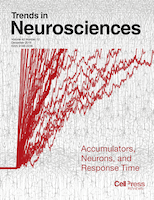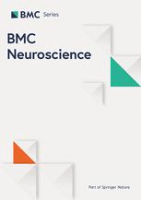
NEUROSCIENCE RESEARCH
Scope & Guideline
Elevating Understanding in the Neuroscience Landscape
Introduction
Aims and Scopes
- Neurobiology of Disease Mechanisms:
Investigates the underlying biological mechanisms of neurological disorders, including neurodegenerative diseases, traumatic brain injuries, and psychiatric disorders. - Behavioral Neuroscience:
Focuses on understanding the relationship between behavior and brain function, including studies on learning, memory, and the effects of various interventions on behavior. - Neuropharmacology and Therapeutics:
Explores the effects of pharmacological agents on the nervous system, including studies on drug mechanisms, therapeutic potentials, and the impact of substances on neural health. - Neuroimaging and Electrophysiology:
Utilizes advanced imaging techniques and electrophysiological methods to study brain structure, function, and connectivity in both human and animal models. - Developmental Neuroscience:
Examines the processes of brain development across different life stages, focusing on how genetic, environmental, and experiential factors influence neural maturation. - Cellular and Molecular Neuroscience:
Investigates the cellular and molecular pathways involved in neural function, including synaptic plasticity, neuroinflammation, and glial cell interactions. - Comparative and Translational Neuroscience:
Utilizes various animal models to translate findings into potential human applications, emphasizing the importance of comparative studies in understanding neurobiological principles.
Trending and Emerging
- Neuroinflammation and Immune Response:
There is a growing focus on the role of neuroinflammation and the immune system in neurological diseases, indicating a shift toward understanding how immune responses contribute to neural health and disease. - Neurotechnology and Brain-Machine Interfaces:
Research on neurotechnological advancements, including brain-computer interfaces and neuromodulation techniques, is increasing, reflecting broader interest in how technology can enhance neural function and rehabilitation. - Microbiome-Brain Interaction:
Emerging studies exploring the gut-brain axis and how gut microbiota influence brain function and behavior are gaining traction, signaling a new frontier in understanding neurobiology. - Personalized and Precision Medicine:
The trend towards personalized treatment approaches in neuroscience, including genetic and biomarker-driven research, is increasingly prominent, focusing on tailored interventions for neurological disorders. - Neural Plasticity and Rehabilitation:
There is a heightened emphasis on understanding neural plasticity mechanisms and their implications for rehabilitation strategies, particularly following injury or in neurodegenerative conditions.
Declining or Waning
- Aging and Neurodegeneration:
Although still relevant, the frequency of publications specifically focusing on aging-related neurodegenerative mechanisms has decreased, possibly due to a shift towards more immediate therapeutic applications and interventions. - Traditional Pharmacological Approaches:
Research centered on conventional pharmacological treatments is becoming less prominent as interest grows in personalized medicine and novel therapeutic strategies, such as gene therapy and neuromodulation. - Neuroanatomical Studies:
While foundational, the emphasis on purely anatomical studies without functional or behavioral context has waned, reflecting a trend toward integrative approaches that combine anatomy with functional outcomes. - Epidemiological Studies in Neuroscience:
The volume of epidemiological research specifically addressing population-based studies of neurological disorders is declining, possibly due to the increasing complexity and cost of such studies.
Similar Journals

NEUROSCIENCE
Fostering excellence in neuroscience scholarship.NEUROSCIENCE, published by PERGAMON-ELSEVIER SCIENCE LTD, has established itself as a reputable journal in the field of neuroscience since its inception in 1976, continuing its contributions through 2024. With a Category Quartile ranking of Q2 in Neuroscience (miscellaneous) and a Scopus Rank of #41 out of 113, this journal represents a critical platform for the dissemination of innovative research and insights. Although it currently does not offer open access options, NEUROSCIENCE aims to advance our understanding of the nervous system by publishing high-quality original research, reviews, and methodological articles, thereby engaging a comprehensive audience of researchers, professionals, and students alike. With an impact factor that reflects its significance in the scientific community, this journal remains a go-to source for cutting-edge discoveries and scholarly discussions in the dynamic field of neuroscience.

Frontiers in Human Neuroscience
Unlocking the Mysteries of Human CognitionFrontiers in Human Neuroscience is a premier open access journal published by FRONTIERS MEDIA SA, dedicated to advancing the understanding of the complexities of human neuroscience. With an ISSN of 1662-5161, the journal has established its prominence in various fields, achieving a Q2 ranking in categories such as Behavioral Neuroscience, Neuropsychology and Physiological Psychology, and Psychiatry and Mental Health as of 2023. Since its inception in 2008, Frontiers in Human Neuroscience has consistently contributed to the scholarly dialogue by offering a platform for innovative research that bridges the gap between neuroscience and behavioral science. The journal's rigorous peer-review process and commitment to open access ensures that findings are readily available, promoting collaboration and progress within the academic community. With an impact on neuroscience disciplines, it stands at the forefront of the field, inviting researchers, professionals, and students alike to engage with cutting-edge studies and developments. The journal's address is located in Lausanne, Switzerland, where it continues to flourish as a hub for neurobiological exploration.

TRENDS IN NEUROSCIENCES
Shaping the Future of Neuroscience DiscoveriesTRENDS IN NEUROSCIENCES, published by CELL PRESS, is a leading journal in the field of neuroscience, offering cutting-edge insights and important developments in the rapidly evolving landscape of brain research. With an impressive Impact Factor and ranking in the top quartile (Q1) of the category for Neuroscience (miscellaneous), it is positioned as a vital resource for researchers and professionals seeking to stay abreast of the latest discoveries and trends from 1978 to the present. Specifically ranked #3 out of 113 in General Neuroscience by Scopus, this journal promotes the interdisciplinary exchange of ideas and knowledge, making it an essential platform for students and experienced scholars alike. Although it is not an Open Access journal, its value lies in its rigorous peer-review process and commitment to maintaining the highest standards of academic integrity. By continuing to explore the complexities of neural processes and behavior, TRENDS IN NEUROSCIENCES plays a crucial role in shaping the future of neuroscience research and education.

BRAIN RESEARCH
Fostering breakthroughs in developmental and molecular biology.BRAIN RESEARCH is a premier journal published by Elsevier, specializing in the intricate domains of neuroscience, developmental biology, and molecular biology. Established in 1966, this esteemed publication has become a cornerstone for researchers, professionals, and students dedicated to advancing our understanding of brain function and disorders. With an impressive impact factor and a consistent presence in the Q2 quartiles across key categories—such as Developmental Biology, Neurology, and Neuroscience—it stands out as an essential resource for disseminating innovative research and pioneering insights. The journal's scope encompasses both clinical and fundamental studies, fostering a multidisciplinary approach to the complexities of neural systems. Although it is not an open-access journal, BRAIN RESEARCH provides a vital platform for sharing progressive findings that can inspire future studies and contribute significantly to the evolutionary discourse in neuroscience. Based in the Netherlands, at RADARWEG 29, 1043 NX AMSTERDAM, BRAIN RESEARCH continues to shape the landscape of neuroscience research, inviting submissions that explore the latest discoveries and therapeutic strategies.

BEHAVIOURAL BRAIN RESEARCH
Exploring the Nexus of Behavior and NeuroscienceBEHAVIOURAL BRAIN RESEARCH, published by Elsevier, is a leading scholarly journal that has been at the forefront of research in Behavioral Neuroscience since its inception in 1980. With an ISSN of 0166-4328 and an e-ISSN of 1872-7549, this journal caters to a global audience of researchers and professionals keen on exploring the intricate relationships between behavior and neural processes. As of 2023, it holds an impressive Q2 ranking within its category, showcasing its significant impact with a Scopus rank of #28 out of 88 in the field, placing it in the 68th percentile. While the journal does not offer open access, it remains accessible through institutional subscriptions, ensuring that its high-quality research is disseminated effectively. The journal's commitment to advancing knowledge in behavioral neuroscience makes it an indispensable resource for those looking to delve deep into the complexities of brain-behavior interactions and foster innovative approaches in both research and clinical applications.

BMC NEUROSCIENCE
Advancing Neuroscience Through Open Access KnowledgeBMC NEUROSCIENCE is a prominent open access journal dedicated to the dissemination of high-quality research within the dynamic and rapidly evolving field of neuroscience. Published by BMC, a well-respected leader in open access publishing, this journal facilitates the free exchange of knowledge since its inception in 2000. With the ISSN 1471-2202, BMC NEUROSCIENCE aims to address the diverse interests of the neuroscience community by covering a broad spectrum of topics, ranging from cellular and molecular neuroscience to general neurological studies, thus appealing to researchers, professionals, and students alike. Although it currently holds a Q4 ranking in Cellular and Molecular Neuroscience and a Q3 rank in miscellaneous Neuroscience categories, its commitment to advancing the understanding of brain function and disorders remains steadfast. The journal features a user-friendly Open Access model, ensuring that critical research findings are readily accessible to everyone, fostering collaboration and innovation in the field. As the journal continues to evolve towards its convergence years of 2024, it aspires to enhance its impact and global reach, making it a valuable resource for anyone interested in advancing neuroscience research.

Brain Structure & Function
Bridging Anatomy and Function for a Deeper UnderstandingBrain Structure & Function is a premier peer-reviewed journal published by Springer Heidelberg, focusing on the intricate relationships between brain anatomy and its functional implications. With a significant presence in the academic community, the journal is recognized for its high impact, evidenced by its rankings in the Q1 categories of Anatomy and Histology and its commendable position in the Neuroscience field. It has successfully maintained a convergence of research and innovation from 2007 to 2024, providing critical insights that drive forward our understanding of the brain. The journal's outstanding metrics, including a ranking of #6 in Anatomy and #18 in Histology within Scopus, highlight its role in shaping modern research. Offering open access options, Brain Structure & Function ensures that its cutting-edge findings and methodologies are accessible to a broad audience of researchers, professionals, and students eager to contribute to the evolution of neuroscience. With its comprehensive scope and commitment to high-quality research, this journal is an essential resource for anyone invested in the complexities of brain structure and their functions.

Science Bulletin
Elevating scholarly excellence, one article at a time.Science Bulletin is a premier multidisciplinary journal published by Elsevier, renowned for its commitment to advancing scientific knowledge across various fields. With an impressive impact factor and achieving a distinguished Q1 category ranking in 2023 within its multidisciplinary scope, Science Bulletin stands out for its rigorous peer-review process and high-quality research dissemination. Since its inception in 2015, the journal has been pivotal in bridging gaps between diverse scientific disciplines, fostering collaboration and innovation. Researchers and professionals can benefit from its Open Access options, ensuring wider visibility and accessibility of groundbreaking research. With a Scopus rank of #4 out of 171, placing it in the 97th percentile, Science Bulletin continues to set the standard for scholarly excellence, making it an essential resource for those seeking to stay at the forefront of scientific discovery.

Eneurobiologia
Unlocking the Mysteries of the BrainEneurobiologia is an esteemed open-access journal published by UNIV VERACRUZANA, INST INVESTIGACIONES & EDUCACION, dedicated to advancing research in the vibrant field of neurobiology. With its launch in 2010, the journal aims to disseminate high-quality, peer-reviewed research articles that explore the complexities of neural systems, neurodevelopment, and neurodegenerative disorders. By providing a platform for both established researchers and emerging scholars, Eneurobiologia fosters interdisciplinary collaboration and knowledge exchange within the scientific community. Its open-access model ensures that valuable findings are accessible to a global audience, promoting the widespread application of neurobiological research. As a crucial resource for students, professionals, and researchers alike, Eneurobiologia plays a pivotal role in shaping the future of neurobiological studies and enhancing our understanding of the brain and nervous system.

SYNAPSE
Fostering Innovation in Neuroscience ResearchSYNAPSE, an esteemed journal in the field of Cellular and Molecular Neuroscience, is published by Wiley and serves as a vital platform for disseminating groundbreaking research in neuroscience. Established in 1987, this journal has been pivotal in exploring the intricate mechanisms governing synaptic function and neural communication, contributing to our understanding of the nervous system. With an ISSN of 0887-4476 and an E-ISSN of 1098-2396, SYNAPSE is indexed in Scopus and currently holds a Q4 quartile ranking in its category, reflecting its niche yet significant presence within the research community. Despite its recent ranking in the 21st percentile among its peers, the journal’s commitment to quality and innovation remains unwavering. It is published from Hoboken, New Jersey, and although it is not an open-access journal, it provides invaluable insights and critical reviews that are pivotal for researchers, professionals, and students alike who seek to advance their knowledge in the dynamic field of neuroscience. Join us in contributing to the ever-evolving discourse in cellular and molecular neuroscience through SYNAPSE.